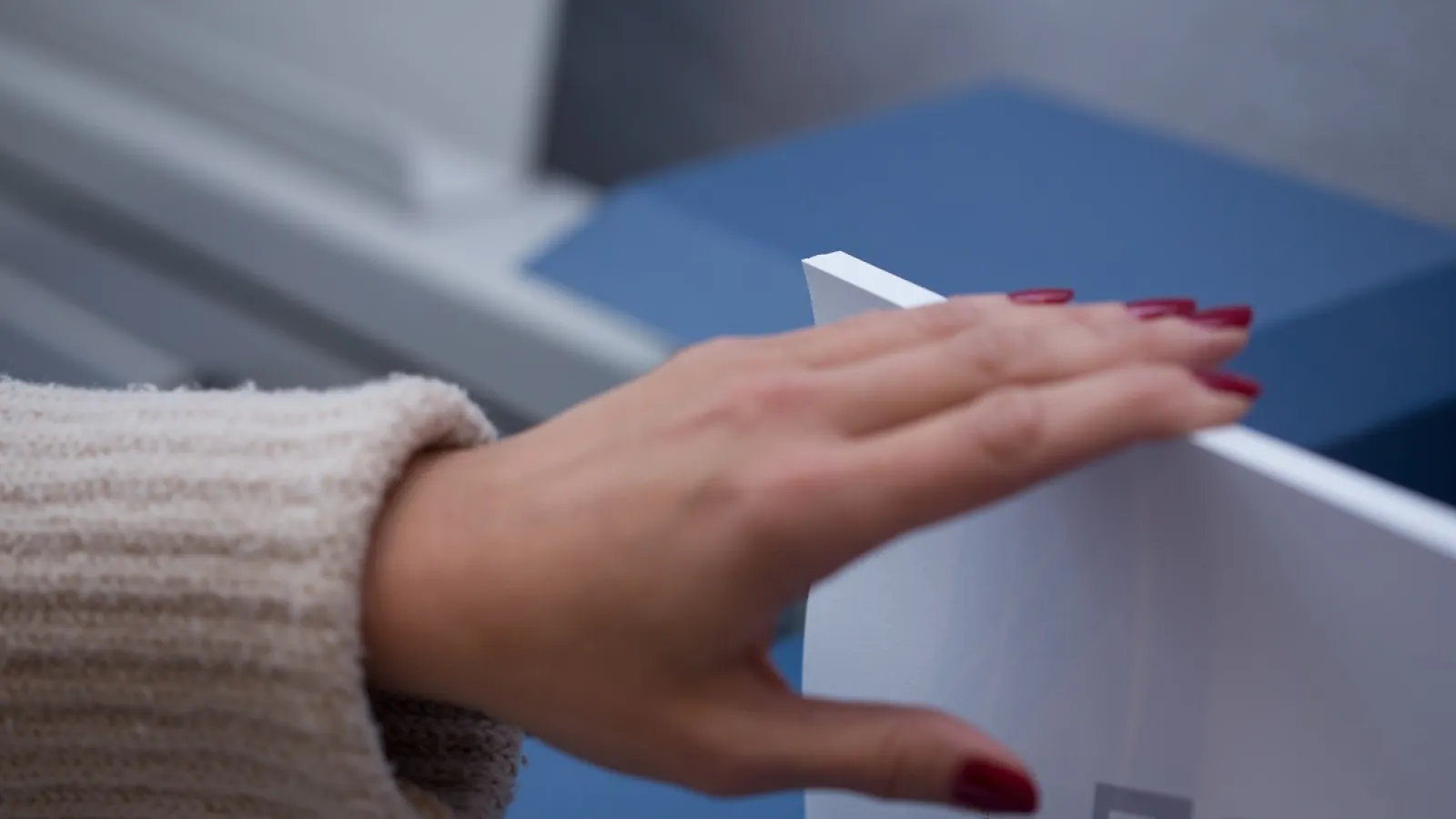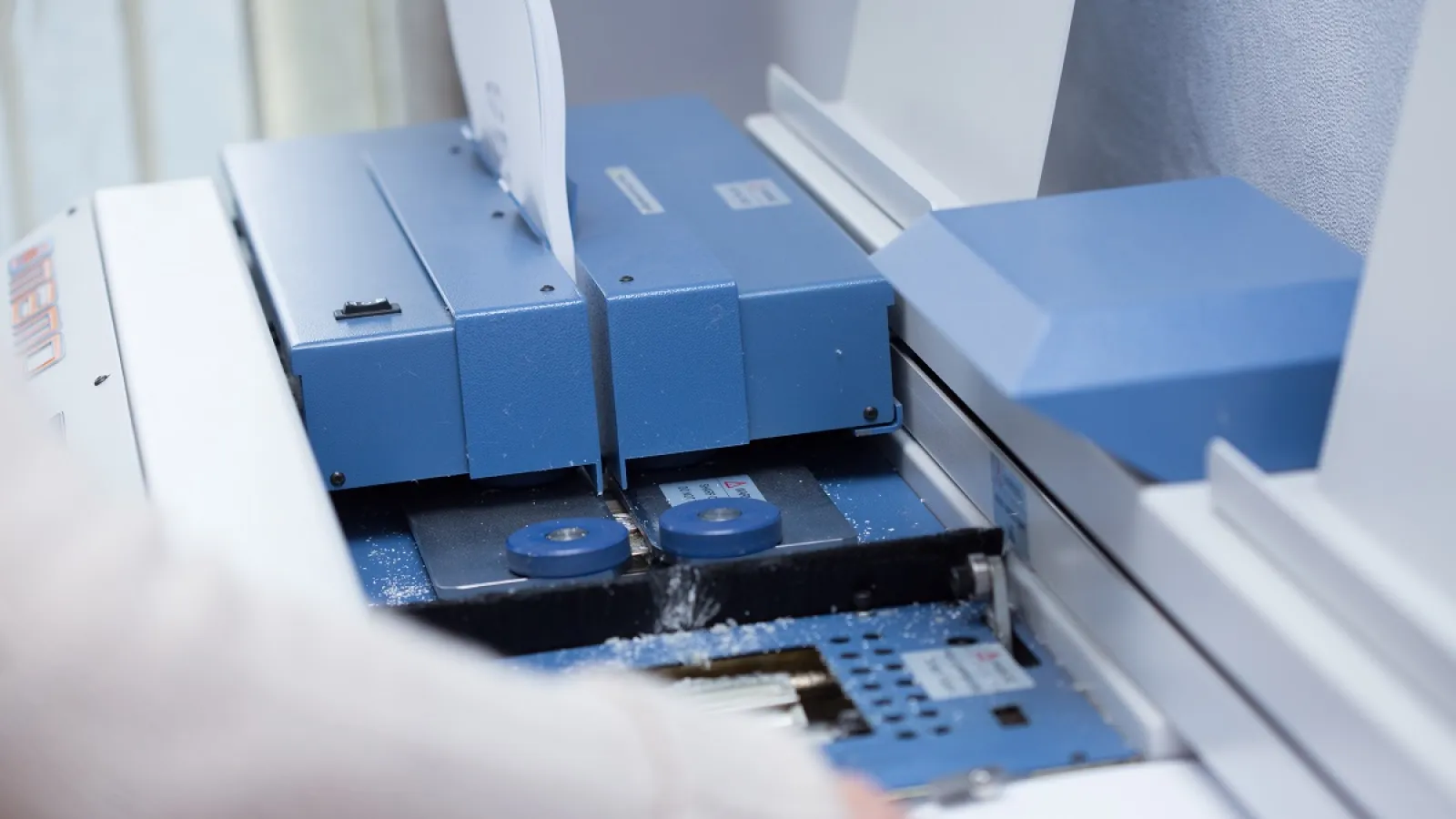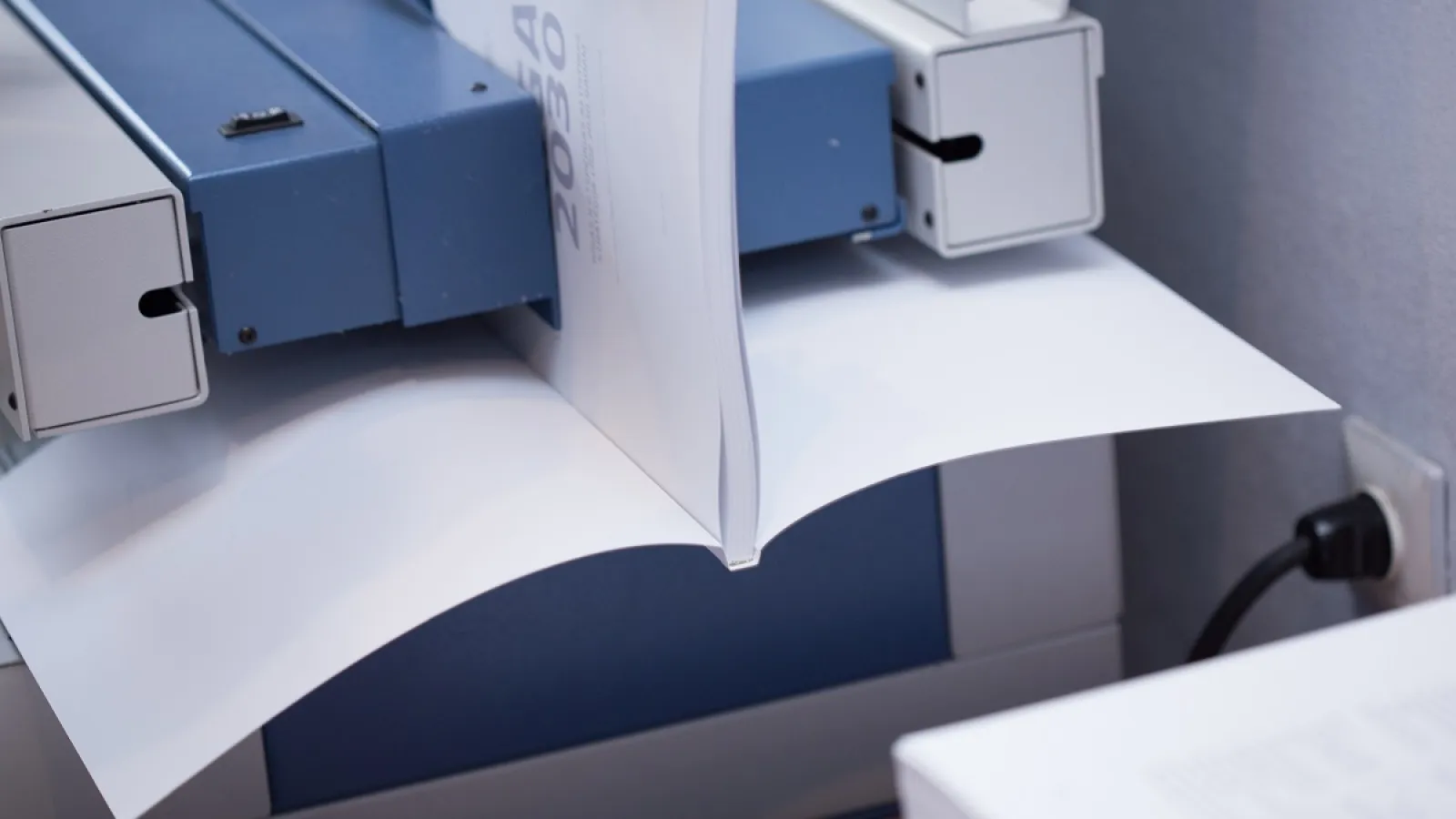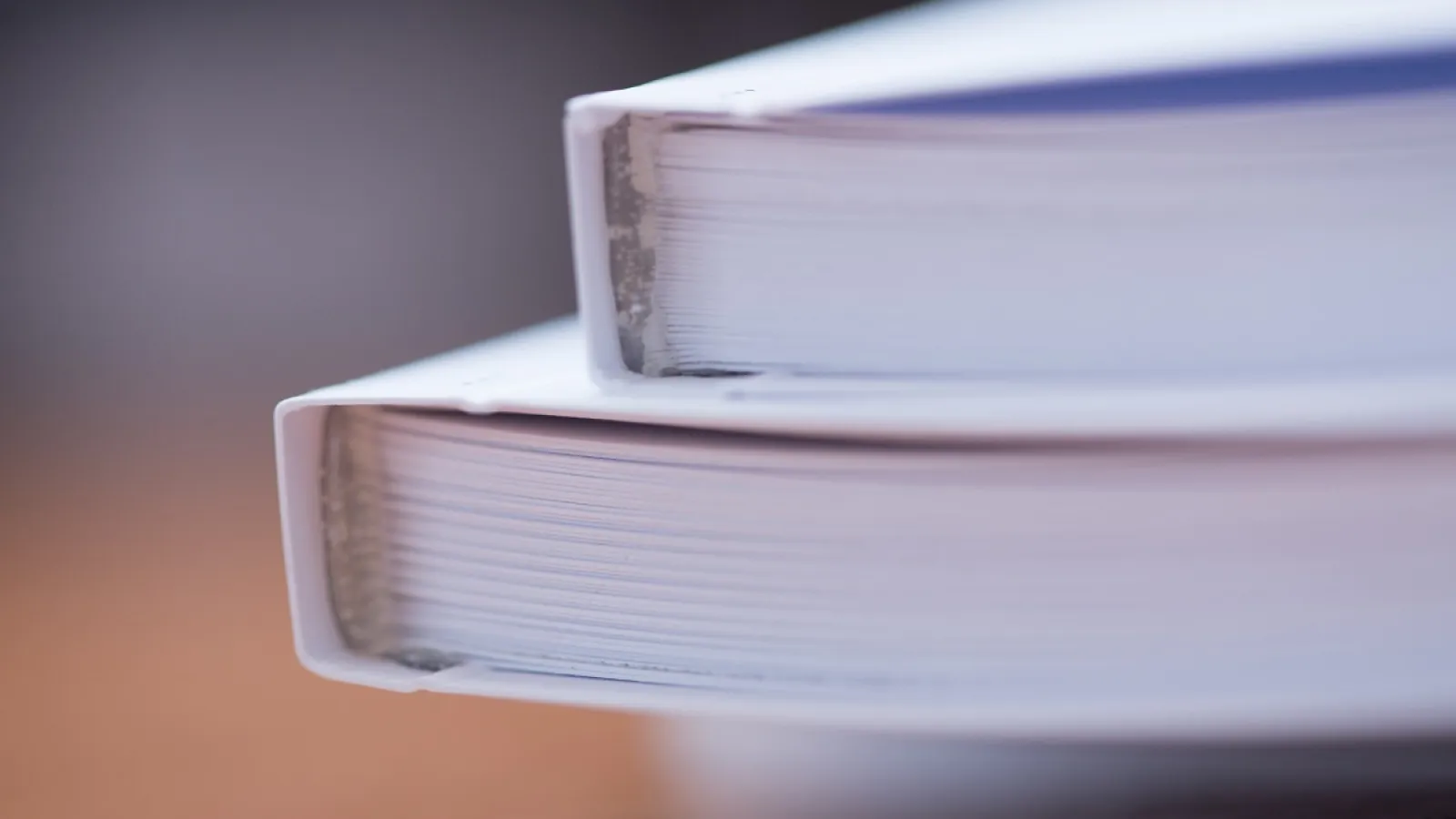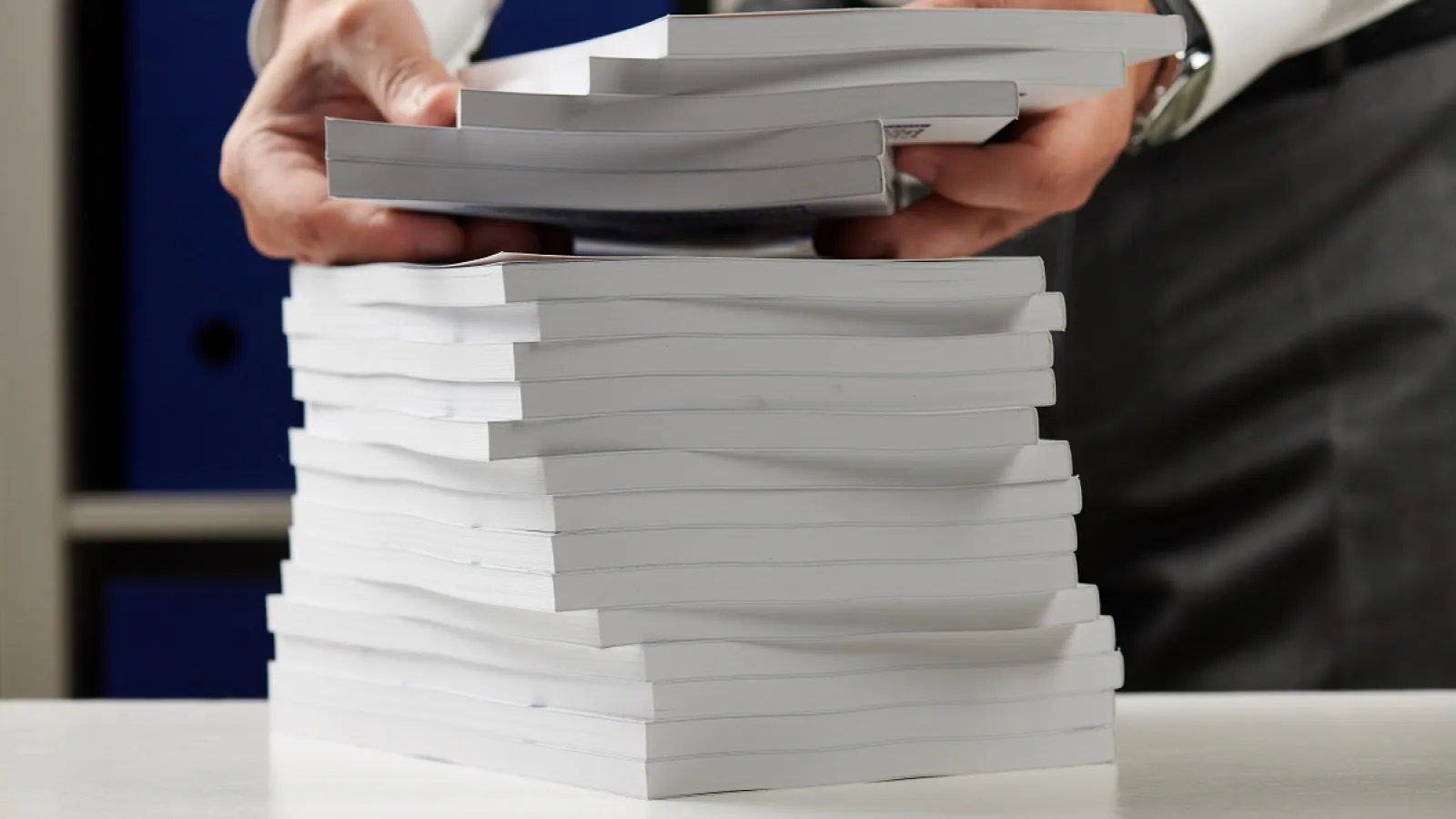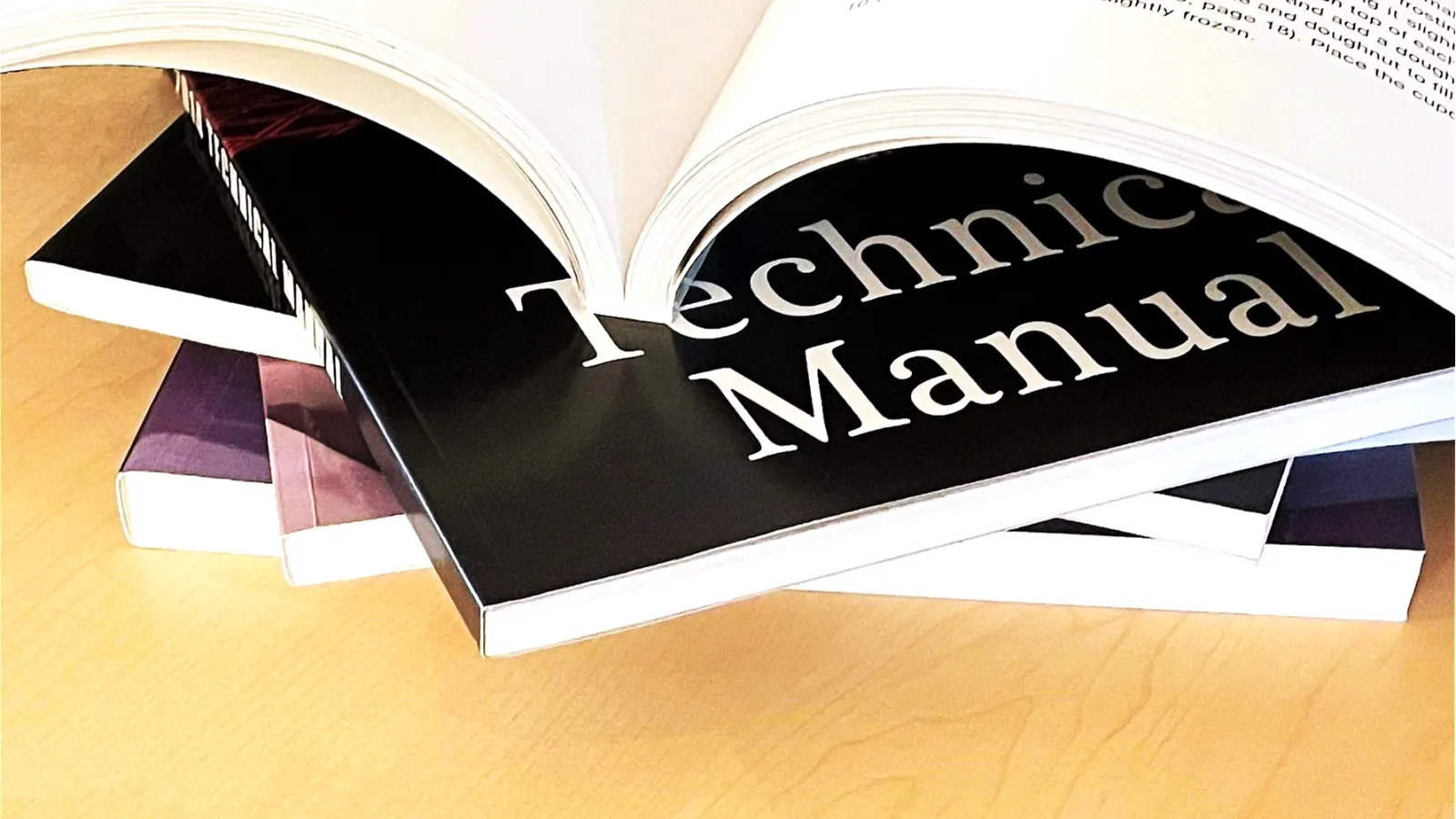
Perfect Binding
Perfect Binding uses a Strong Adhesive
Perfect Binding is one of the most widely used book-binding methods for creating softcover books. The cover and pages of a perfect-bound book are bound together at the spine using a hot-melt adhesive that is both durable and flexible.
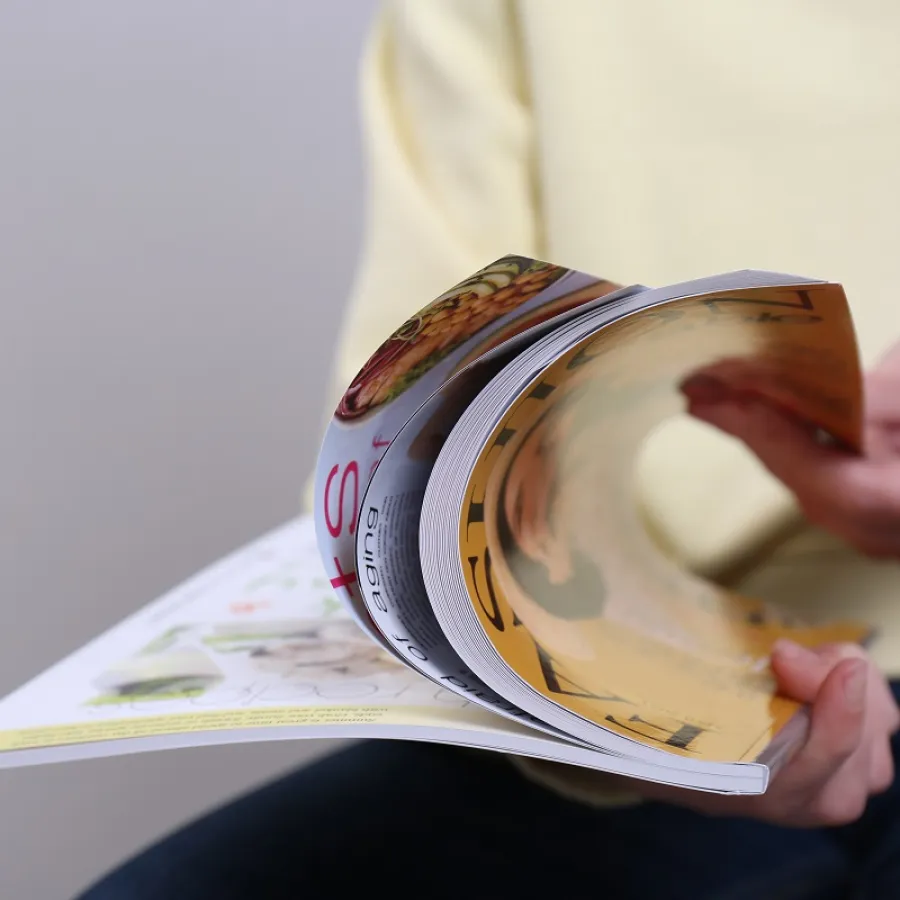
Perfect Bound Books
Overview & Applications
The cover of a perfect bound book is generally made from heavier card stock, whereas the pages are usually a lighter text weight. Also, the cover often has an optional clear coat or laminate applied. This not only helps improve the book's appearance, it also prolongs the life of the book by reducing scuffs and wear.
Unlike all other softcover binding styles, the perfect binding method creates books that have a flat spine. In most cases, this allows the spine to be printed with the book's title and other information.
Perfect Binding is ideal for a wide variety of books and publications, including manuals, catalogs, novels, journals, directories, handbooks, magazines, and any other bound document that is more than 1/8" in thickness.
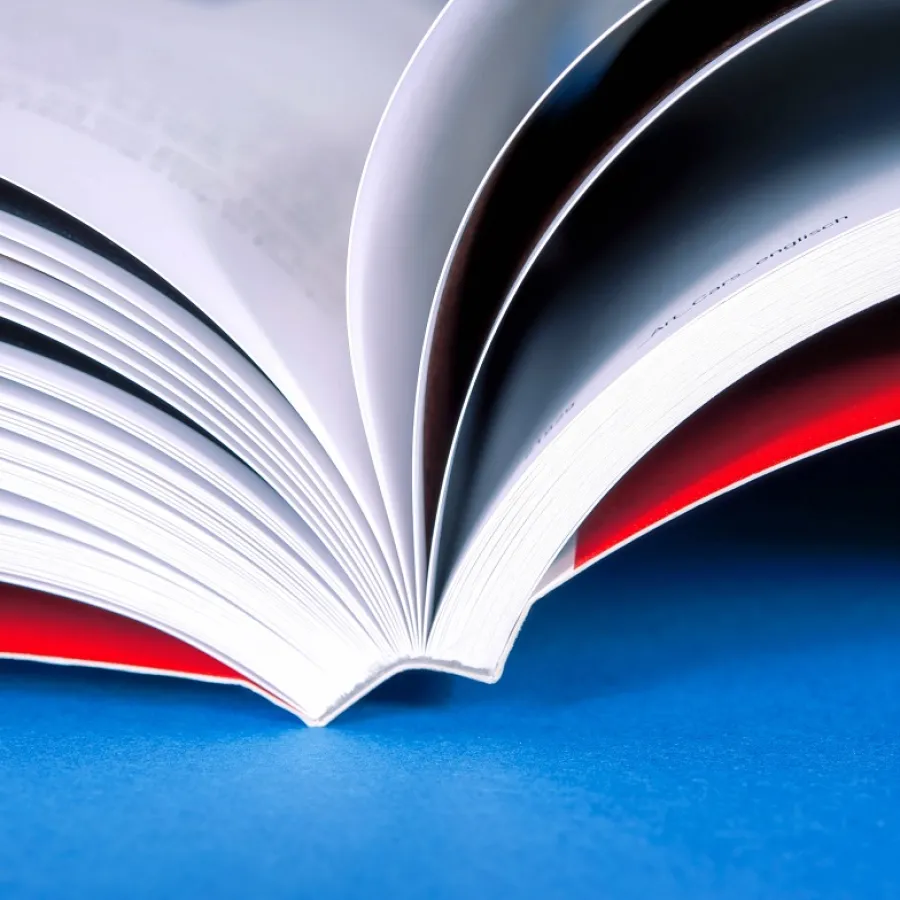
PUR is the Best Glue for Perfect Bound Books
Color Vision uses only PUR glue in its perfect binding process. PUR glue (polyurethane reactive) is far superior to the traditional EVA glue (ethylene vinyl acetate) used by many other book printers.
PUR glue offers significantly better adhesion and bonds securely to virtually all surfaces, including UV-coated, laminated, and synthetic stocks. PUR also offers lasting durability and remains strong and flexible, even when subject to extreme heat or cold.
Print Knowledge Center
Concepts, definitions, and advice to supplement your printing knowledge.
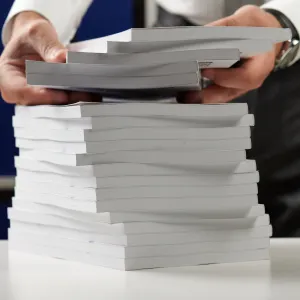
Book Printing: 9 Advantages of Perfect Binding
Read This Article

Perfect Bound Book Printing: Tips for getting the Best Value
Read This Article
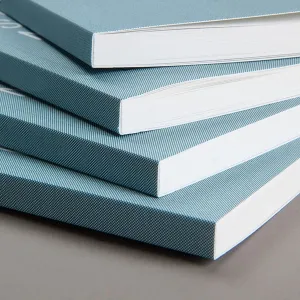
10 Frequently Asked Questions about Perfect Binding
Read This Article
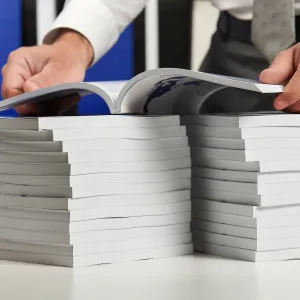
Perfect Bound Book Printing: 7 Reasons to Bind with PUR Glue
Read This Article
